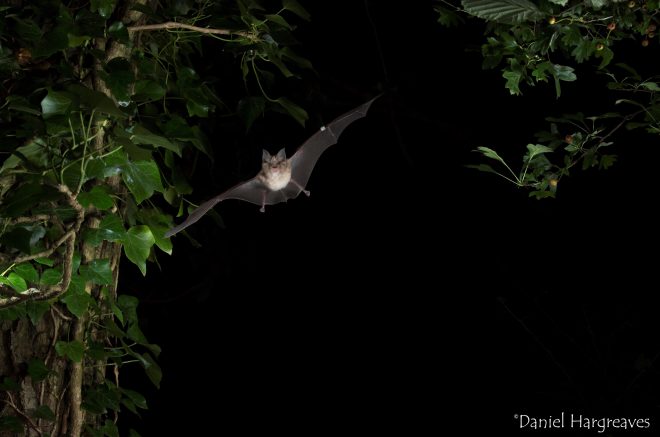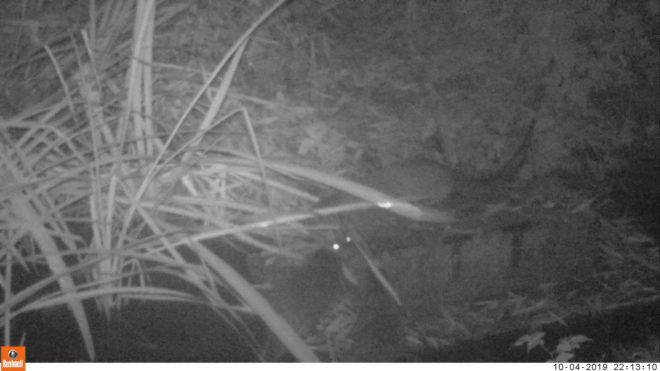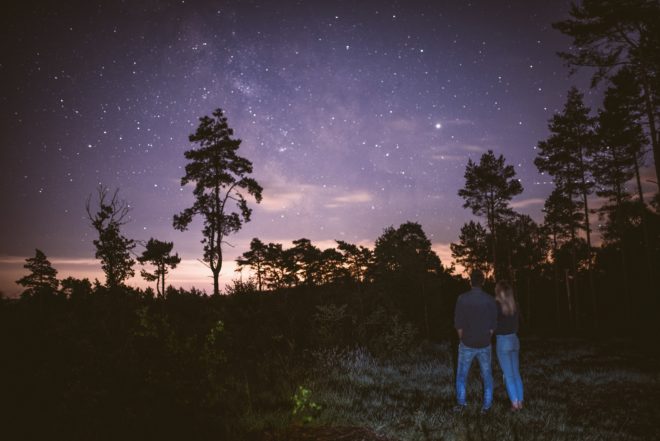Highlights of the South Downs Dark Skies this festive season
December 6, 2023

Winter nights can seem long and dark but they are also a great opportunity to explore the amazing habitat that is darkness and the night. And it is a habitat – many creatures live in and rely on the dark, which is something the South Downs National Park is keen to protect as one of 21 International Dark Sky Reserves.
While many nocturnal creatures are slowing down or even sleeping the winter away, there are a few who brave the colder weather. Tawny owls are still active and you may be lucky enough to hear them hooting to one another – the too-whit, too-whoo is actually a call and response between two owls. There are a few moth species that are winter specialists and you may get a glimpse of them in car headlights or torch lights, especially on slightly warmer nights. Did you know that two thirds of invertebrates are either partially or wholly nocturnal?

Of course, darkness and clear skies also offer awe-inspiring views across our solar system, galaxy and beyond.
Coming up in the night skies in December:
- The largest planet in the solar system, Jupiter, continues to shine brightly throughout the night. If you happen to have access to a pair of binoculars or a small telescope, have a look at Jupiter and see if you can see any of the 4 Galilean moons which are (closest to furthest): Io, Europa, Ganymede and Callisto.
- The waning crescent moon will be visible, if the skies are clear, in the dawn skies on 9 December close to the bright morning star or Venus. It looked spectacular in November, so here’s hoping for clear skies again this month!
- The moon will be dark, or new, on 13 December, coinciding with the peak of the Geminid meteor shower on 13/14/15 December, meaning that the meteors, or shooting stars will be more visible as they won’t be washed out by the light of the moon. Fingers crossed for clear skies then too!
- As the moon waxes towards full, take a look in the west on 17 December, where it will be near the ringed planet Saturn.
- Winter solstice, also known as the shortest day, happens this year on 22 December.
- December’s full moon, also known as the Cold Moon, is on 27 December.
- Winter is also an excellent time for experiencing the aurora borealis, or northern lights – there are plenty of apps and facebook groups that send out alerts when there are geomagnetic storms which may produce aurora visible in the UK. Solar activity is heading towards its maximum at the moment which is why more aurora are visible, and further south.

If you would like to find out more about nocturnal wildlife and dark skies in the South Downs, then come along to our Dark Skies Festival, taking place from 10-18 February 2024. The programme will be available on our website towards the end of the January. And if you feel inspired, why not take some photos over this wonderful wintry dark period and enter our astrophotography competition! The three categories are South Downs Starry Skyscapes, Nature at Night, and Magnificent Moon, and the closing date is Friday 12 January 2024.
See you under the stars!
Elinor Newman, Astrophysicist and Events Assistant for South Downs National Park

